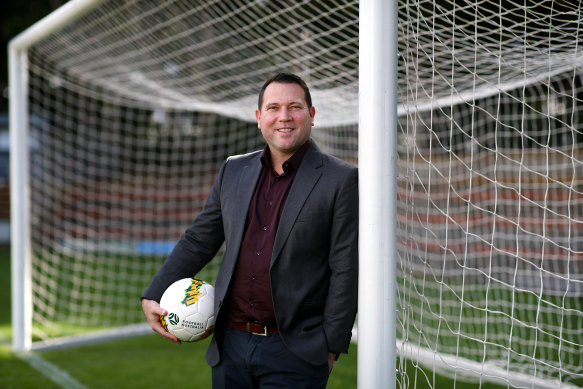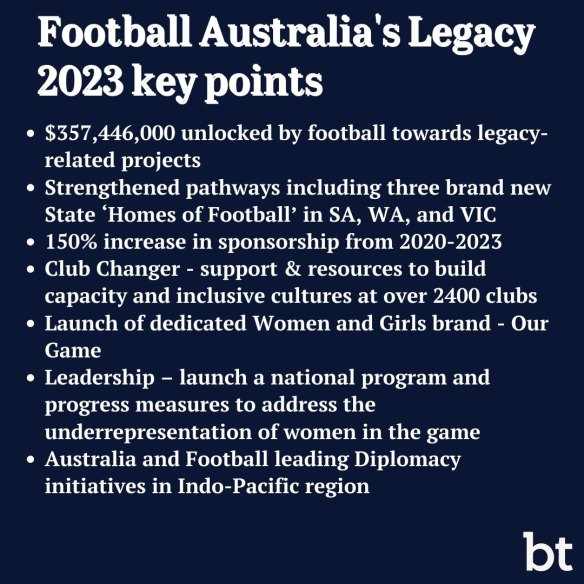On the eve of the 2023 FIFA Women’s World Cup, Johnson flagged that expansion of the A-League Women’s competition and the lowering of costs associated with playing in the second-tier National Premier League needed to be addressed.
And he was adamant that increasing community pathways would help create the growth FA was pursuing.
“That requires investment from federal and state government, mainly, and in particular because of the number of participants we’ve got across the country we need community fields, otherwise we can’t grow,” Johnson said.
“Queensland has become the second-biggest participant state in the country.
“We know in Australia there’s a correlation between our national teams and participation.

Football Australia chief executive James Johnson.CREDIT:FOOTBALL AUSTRALIA/GREGG PORTEOUS
“If we go back to the men’s World Cup in Qatar, what we’ve seen post that competition is a 10 per cent increase in participation across the country.
“One of the objectives of us bringing the Women’s World Cup to Australia was for exactly this purpose, we wanted to see a large increase in participation ... and we’re forecasting that post the Women’s World Cup there will be another 20 per cent on top of that 10 per cent of participants that will start playing the sport.
“I think the bigger challenge in Queensland for our sport is the community facilities, because what we don’t want is kids not being able to play because there’s not enough fields, and that is an issue.”
With the 2023 Women’s World Cup to kick off on Thursday, Johnson said FA had already started planning for what was to come next.
On that radar is the Women’s Asia Cup, and even further down the track the Men’s 2034 World Cup.

Football Australia’s Legacy 2023 Key PointsCREDIT:CANVA
Johnson believed Australia’s time zone, shared with markets less dominated by soccer, would give the nation a competitive advantage in securing more marquee events.
“Playing a major tournament in this time zone is different because you’re not in the typical time zone for world football,” Johnson said.
“We’re in the same time zone as countries like Indonesia, China, Thailand, Philippines, the west coast of the United States, India – these are big markets and high-growth markets for world football.
“This opportunity to watch top-tier football in this part of the world, in this time zone, I think will create legacy for the region and that’s important for the question ‘what’s next?’
“If we’re that country together with New Zealand, that moves the dial in world football, it will be easier to get bids in the future.
“The 2034 Men’s World Cup? Maybe.
“But also let’s not forget we’re bidding for the Women’s Asia Cup, and we’re up against Saudi Arabia, and we’re in the mix.
“We hope that the success of delivering the best-ever Women’s World Cup lands us that competition.”
[theage]

